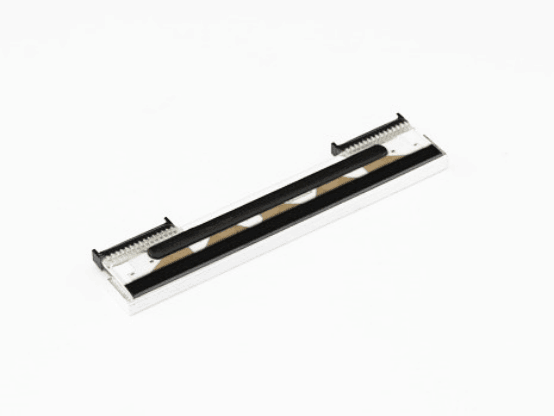Five paradoxes about flexible packaging
[China Packaging Network News] From 2010, the average annual growth rate of flexible food packaging is 4%, and new types of packaging films, substrates, inks, adhesives, and related application methods are growing faster. However, eager to find new ideas, so that the market is full of misinformation and misunderstanding of packaging. The only role of packaging is to ensure that internal products are free or less exposed to external contamination, as well as the contamination of packaging materials' own chemicals, and that they can pass the penetration test.

This article will explain five key factors for penetration testing. Understanding these key points helps to ensure that the test yields reasonable results to determine whether the packaging material is safe to use.
Paradox 1: All packaging substrate films can effectively block chemical substances that leak out of packaging materials
Not all polymer films are effective barriers, and even some films do not perform well at certain conditions, for example, some environmental factors (mainly temperature), and substances contained inside the food. At present, the most commonly used barrier film is linear low density polyethylene (LLDPE), but the barrier effect of this material under certain conditions is not good. Even some metal films are not necessarily effective barriers. Compared to the barrier effect, the metal film mainly brings a good-looking appearance. Laboratory data confirms that metal films can destroy barriers and increase chemical penetration.
The following listed polymer films are ranked according to the strength of the barrier (depending on the thickness of the material and the application): Linear Low Density Polyethylene (LLDPE) <High Density Polyethylene (HDPE) <Polypropylene (PP) <Poly Pair Ethylene terephthalate (PET)
Unfortunately, the Food and Drug Administration (FDA) and the European Food Safety Authority (EFSA) have very few detailed guidance documents on barrier functions. The only way to test whether a material has barrier properties is to use a real chemical, as well as food stimulation, and simulate specific environmental conditions for penetration testing.

Paradox 2: Single temperature detection is suitable for any packaging material
In order to obtain reliable data on packaging materials, the penetration experiment must set a certain temperature to simulate the actual environmental conditions. Is the product hot-filled or fermenter? Is the packaged product refrigerated or frozen? Does the product need microwave heating?
The FDA provided 10 factors for temperature conditions (EFSA alone provides guidance):
A. High temperature, heat sterilization or fermentation tank temperature 121°C (250°F)
B. Boiler sterilization temperature 100°C (212°F)
C. Hot filling or pasteurization temperatures above 66°C (150°F)
D. Filling and preservation at room temperature (no heat treatment in the container)
E. Cold storage (no heat treatment in the container)
F. Cryopreservation (no heat treatment in the container)
G. Cold Storage or Cryopreservation: Preprocessed Foods, Heated (Ionizing Radiation) Before Use
H. Cooking temperature exceeds 121°C (250°F)
10-59-01-83-101.jpg
Paradox 3: If a material does not exceed the permeation limit in a short period of time, the product is safe
Penetration tests must be exposed for a long time before accelerated testing can be performed. The FDA and EFSA give guidance on all possible conditions during the shelf life. For example, the FDA recommends that an exposure test at 40°C for 10 days be used to simulate the shelf life of foods stored at room temperature for 6-12 months.
Paradox 4: All materials are the same for any food stimuli
The various characteristics of food - oils, acids, moisture, alcohol - have potential chemical penetration effects. The FDA and EFSA have given a variety of food stimuli that can be used in osmotic tests to simulate the chemical penetration of real foods. The FDA did not give stimuli for dry foods such as raw pasta, cereals, rice cakes, and black coffee. The EU believes that there is a stimulatory effect of poly 2,6-biphenyl-P-phenylene oxide (TENAX) on dry foods. Compared to other food stimuli, the stimulatory effects of the oils in foods are more likely to cause penetration.
Water and acids (fruit, vegetables, fruit juice, mustard, ketchup, salad, milk, bread)
10% ethanol/90% water. Note: Compared to 10% ethanol, 3% acetic acid in acidic foods is more likely to cause penetration.
Alcohol (beer, malt, wine, distilled spirits)
10% ethanol/90% water (calculated as weight percent of ethanol unless the final product contains more than 10% alcohol).
Grease (cooks, butter, meat, seafood, ice cream, donuts, cookies, chips, nuts)
95% ethanol/5% water (or oil stimulation).
Paradox 5: Infiltration risk is determined by the strength of the barrier function
The packaging plant cannot fully believe that the packaging material used has a sufficient barrier effect. Safety also depends on the degree of chemical composition penetration. Flexible food packaging may contain a variety of single chemicals, any one of which has the potential to penetrate. Examples include some unreacted molecular monomers, residual solvents, processing byproducts, and inks, coatings, varnishes, laminating adhesives for UV processing, and photosensitizers for inks. Packaging companies must determine which chemical substances are likely to infiltrate, as well as the hazards of infiltration, and determine reasonable limits of detection based on penetration hazards and potential exposures. After completion of the penetration test and diffusion test, the risk assessment of the packaging material according to the intended use is also required. In essence, it is a simple infiltration experiment evaluation conducted for a safe diet.
The rapid growth of flexible packaging, new chemical substances, new material combinations, and persistent error messages on the market have brought us new challenges and potential security risks. In order to reduce the risk of contamination that may be ignored, food manufacturers must avoid speculation on packaging materials and perform the necessary penetration tests in accordance with GMP practices.
Brand New Japanese imported ROHM original printhead of the ncr pos printhead.
NCR International Inc. (ATM), retail systems, Teradata data warehousing and IT services provide customers with technical solutions that can continuously enhance the value of customer interaction. NCR is headquartered in Dayton, Ohio, and employs 29,600 people in more than 100 countries worldwide. 2008, the world's Top 500 fortune, ranked No. 391. NCR is a leading supplier of global relationship management technology solutions to the global retail, financial, communications, manufacturing, tourism, transportation and security services. NCR's relationship management technology solutions include Teradata data warehouses, customer relationship management (CRM) applications, store automation systems, and ATM (ATMs) that ensure data confidentiality.

Ncr 7167 Printhead,Ncr 7198 Printhead,Ncr Brand New,Original Thermal Printhead
Taishan Wenshin Electronic Co., Ltd. , http://www.ws-posprinterpart.com